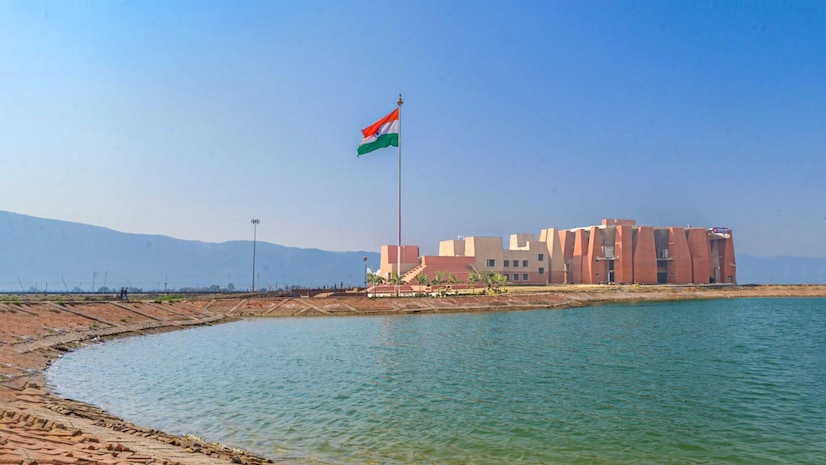
2024-06-22 13:50:02

JUNE 19, 2024 Nalanda: The new campus of Nalanda University ahead of its inauguration by Prime Minister Narendra Modi. (Photo: PTI)
The campus has two academic blocks with 40 classrooms where around 1900 students can study and two auditoriums each with a seating capacity of 300 students.
Nalanda University also provides a hostel facility, where around 550 students can be accommodated, an international centre, an amphitheatre with a capacity of 2000 individuals, a facility club and a sports complex. The significance of the new campus lies in its advanced infrastructure and it’s a symbolic rebirth of an ancient centre of learning.
The inauguration ceremony was attended by numerous dignitaries including external affairs minister S Jaishankar and different countries’ ambassadors.
Nalanda University History
Situated in the ancient kingdom of Magadha (modern-day Bihar), Nalanda University was established in the fifth century CE. It was located near Rajagriha city (present-day – Rajgir), close to Patliputra (present-day – Patna). Nalanda University is considered the world’s first residential university where scholars came from all over the world, including Korea, Japan, China, Mongolia, Sri Lanka, Tibet and Southeast Asia.
The university received international acclaim and thrived under the patronage of the Pala dynasty during the 8th and 9th centuries. Subjects taught at Nalanda University were medicine, Ayurveda, Buddhism, mathematics, grammar, astronomy, and Indian philosophy.
The impact of Nalanda University can be significantly seen in its contribution to mathematics and astronomy. Indian mathematician and the inventor of Zero, Aryabhata, was one of the esteemed educators at Nalanda University during the 6th century CE.
However, it wasn’t easy to get admission into the University as students had to face rigorous interviews. Students who gained admission were mentored by a group of scholars under the guidance of Buddhist masters like Dharmapala and Silabhadra. The university was home to nine million handwritten palm-leaf manuscripts and its library was known as ‘Dharma Gunj’ or the ‘Mountain of Truth’, making it the richest repository of Buddhist knowledge.
Interesting facts about Nalanda University
-
Nalanda University was established in the 5th century CE and attracted scholars from all across the world due to its renowned excellence in various disciplines. -
The library of Nalanda University, “Dharma Gunj” or “Mountain of Truth,” had over nine million books, including some of the most sacred manuscripts, stored in a nine-storey building, Ratnodadhi. -
It was the world’s first residential university accommodating over 10,000 students and over 2000 teachers. -
It was also a major centre for Buddhist studies and subjects like astronomy, medicine, logic, and mathematics. -
Located in the Nalanda ruins, it was declared a Unesco World Heritage Site in 2016 emphasising the site’s immense cultural and historical importance. -
The idea to revive Nalanda University was proposed by former president APJ Abdul Kalam in 2006. -
Nalanda University reopened in 2014, after nearly 800 years, marking a significant milestone in the history of the world’s oldest centres of learning. The new campus signifies the revival of the ancient university, combining ancient wisdom with modern knowledge. -
The new campus signifies the revival of the world’s oldest universities, blending ancient wisdom with contemporary knowledge. -
Mathematician and inventor of zero, Aryabhatt, is also believed to have studied and taught in Nalanda. -
It attracted students from all across the world, including Korea, Japan, China, Mongolia, Sri Lanka, Tibet and Southeast Asia.
First Published: Jun 20 2024 | 1:18 PM IST





